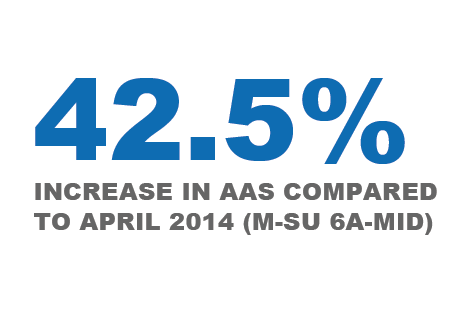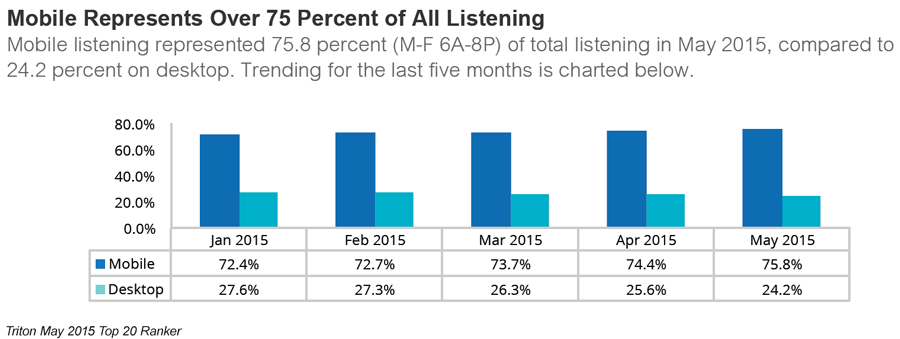Yesterday, Triton released its Top 20 Ranker results of Internet radio listening for May. The story is consistent with previous entries by Triton captured by its audio measurement platform Webcast Metrics. As an industry,  average active listening sessions increased 42.5% over May 2014. RAIN News has aggregated the Triton Ranker Metrics since 2009 and shows that most of the gain over the past year has come from Pandora and Spotify.
average active listening sessions increased 42.5% over May 2014. RAIN News has aggregated the Triton Ranker Metrics since 2009 and shows that most of the gain over the past year has come from Pandora and Spotify.
The publication also noted that May was the first sequential monthly decline after five consecutive months of gains. However, this follows a familiar seasonal pattern that shows a peak in the first calendar quarter followed by a slight decline in the second quarter that gives way to new highs in third and fourth quarter sessions. Average active sessions (AAS) are increasing due to new users adopting Internet radio as well as current users increasing their usage frequency.
The bigger story for Internet radio trends in 2015 is another metric that isn’t covered here: Time Spent Listening (TSL). Whereas AAS track frequency of new listening sessions, TSL is a measure of intensity or length. We will have more analysis on this topic in a future post.
Triton Data Shows 75% of Listening is on Mobile
The other significant metric from the May data is the finding that more than 75% of Internet radio listening for the services tracked were on mobile.
Consumers are making two clear choices around audio consumption. The first is increased listening to Internet radio and streaming audio services. The second is a strong preference for listening on mobile. The increase in smartphone ownership has made anywhere-listening the most convenient form of audio content access.
Keep in mind that the Triton numbers now represent the low estimate for mobile usage because it is based only on services that Triton tracks, many of which have many desktop heritage users. comScore data suggests mobile listening is as much as 95% of all streaming audio. The key finding for advertisers is that Internet radio and streaming audio should be viewed primarily as a mobile marketing channel.
Related Posts
Internet Radio Trends Report 2015
Nielsen Data Confirm Listener Time Shift to Ad-Supported Online Audio
4 Charts Show Radio’s Future is on Mobile

